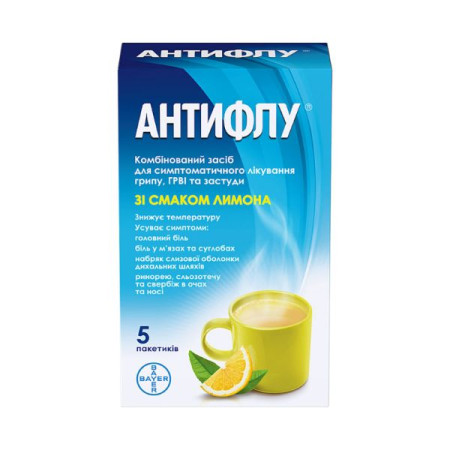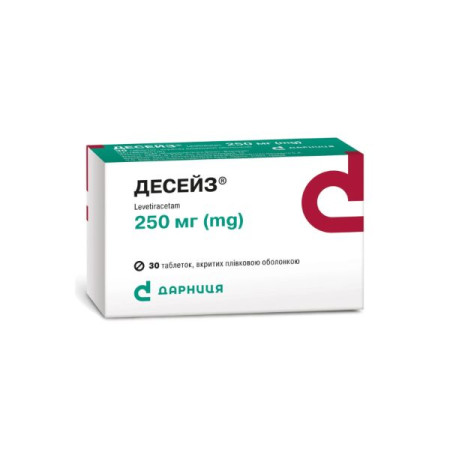Betadine vaginal suppositories 200 mg blister No. 14

Instructions Betadine vaginal suppositories 200 mg blister No. 14
Composition
active ingredient: povidone-iodine;
1 vaginal suppository contains 200 mg of povidone-iodine (corresponding to 18-24 mg of active iodine);
excipients: macrogol 1000.
Dosage form
Vaginal suppositories.
Main physicochemical properties: torpedo-shaped homogeneous suppositories of dark brown color with the smell of iodine.
Pharmacotherapeutic group
Antimicrobial and antiseptic agents used in gynecology. ATX code G01A X11.
Pharmacological properties
Pharmacodynamics.
Povidone-iodine is a complex of iodine and polyvinylpyrrolidone polymer, which releases iodine over a period of time after application to the skin. Elemental iodine exhibits a strong bactericidal effect, has a broad spectrum of antimicrobial activity against bacteria, viruses, fungi and protozoa.
Mechanism of action: free iodine has a rapid bactericidal effect, and the polymer is a depot for iodine.
Upon contact with skin and mucous membranes, a significant amount of iodine is released from the polymer.
Iodine reacts with oxidative-sulfide (SH) and hydroxyl (OH) groups of amino acids that are part of enzymes and structural proteins of microorganisms, inactivating or destroying these proteins. Most microorganisms are destroyed by in vitro action in less than a minute, and the main destructive effect occurs in the first 15-30 seconds. In this case, iodine is discolored, and therefore a change in the saturation of the brown color is an indicator of its effectiveness.
The active ingredient of the drug Betadine® vaginal suppositories has a broad antimicrobial spectrum of action, namely, it acts on gram-positive and gram-negative bacteria (bactericidal), on viruses (virulicidal), on fungi (fungicidal) and fungal spores (sporicidal), as well as on some simpler microorganisms (protozoal).
Due to the mechanism of action, resistance to the drug, including secondary resistance, is not expected with long-term use.
The drug dissolves in water and is easily washed off with water.
Prolonged application of the drug to large wound surfaces or severe burns, as well as mucous membranes, can lead to the absorption of a significant amount of iodine. As a rule, as a result of long-term use of the drug, the iodine content in the blood increases rapidly. The concentration returns to the initial level 7-14 days after the last use of the drug.
In patients with normal thyroid function, increasing iodine stores does not cause clinically significant changes in thyroid hormonal status.
Pharmacokinetics.
The absorption and renal excretion of povidone-iodine depends on its molecular weight, and since it varies between 35,000-50,000, retention of the substance is possible.
The absorption of povidone-iodine or iodide is the same as that of regular iodine from other sources.
The volume of distribution corresponds to approximately 38% of body weight, the biological half-life after vaginal administration is about 2 days. The normal total iodine level in the blood plasma is approximately 3.8-6 μg/dl, and the level of inorganic iodine is 0.01-0.5 μg/dl. The drug is excreted from the body mainly through the kidneys with a clearance of 15 to 60 ml/min depending on the level of iodine in the blood plasma and creatinine clearance (normal: 100-300 μg iodine per 1 g creatinine).
Indication
Acute and chronic vaginal infections (colpitis):
mixed infections;
nonspecific infections (bacterial vaginosis caused by Cardnerella vaginalis);
fungal infections (Candida albicans);
vaginal infections due to treatment with antibiotics and steroid drugs;
trichomoniasis (if necessary, combined systemic treatment should be carried out).
Preoperative prophylaxis for vaginal surgery or diagnostic procedures.
Contraindication
Hypersensitivity to iodine or suspected hypersensitivity to other components of the drug.
Patients with thyroid dysfunction (nodular colloid goiter, endemic goiter and Hashimoto's thyroiditis).
Patients with hyperthyroidism or other acute thyroid disorders.
Before and after treatment and radioactive iodine scintigraphy in patients with thyroid carcinoma.
During's dermatitis herpetiformis.
Kidney failure.
Interaction with other medicinal products and other types of interactions
The povidone-iodine complex is active against microorganisms at pH 2-7.
The simultaneous use of PVIodide and hydrogen peroxide, as well as enzyme preparations containing silver and tauloridine for wound treatment or antiseptic preparations, leads to a mutual decrease in effectiveness.
The use of povidone-iodine simultaneously with or immediately after use with antiseptics containing octenidine may lead to the appearance of dark necrosis at the site of application of the drug.
PVP-Iodine should not be used with mercury preparations due to the risk of formation of alkaline mercuric iodide. The drug may react with proteins and unsaturated organic complexes, so the effect of PVP-Iodine may be compensated by increasing its dose.
Due to its oxidizing properties, povidone-iodine may affect the results of some diagnostic tests, such as the detection of occult blood in the stool or urine, or glucose in the urine.
When using povidone-iodine, the uptake of iodine by the thyroid gland may be reduced, which may affect the results of some diagnostic tests (e.g. thyroid scintigraphy, determination of protein-bound iodine, measurement of radioactive iodine) or may counteract with iodine used for thyroid therapy.
Thyroid scintigraphy should be performed after discontinuation of long-term therapy for 1-2 weeks to obtain reliable results.
Application features
The use of PVIodine may reduce the uptake of iodine by the thyroid gland, which may affect the results of some examinations and procedures (thyroid scintigraphy, determination of protein-bound iodine, diagnostic procedures using radioactive iodine), and therefore planning the treatment of thyroid disease with iodine preparations may be impossible.
It is necessary to take a break from using PVIod for at least 1-4 weeks.
The drug should not be used in patients before or after treatment of thyroid cancer with radioactive iodine or radioactive iodine scintigraphy.
Significant amounts of iodine can cause hyperthyroidism in patients with thyroid dysfunction (e.g., nodular colloid goiter, endemic goiter). Therefore, they are limited in the application of the ointment in terms of time and the area of skin surface being treated.
Even after treatment is completed, it is necessary to monitor for the appearance of early symptoms of hyperthyroidism and monitor thyroid function.
The oxidizing effect of PVI can cause corrosion of metals, while plastic and synthetic materials are generally not sensitive to PVI. In some cases, discoloration may occur, which is usually reversible.
PVI is easily removed from textiles and other materials with warm soapy water. Stains that are difficult to remove should be treated with ammonia solution or sodium thiosulfate.
Excessive iodine intake may cause hyperthyroidism in patients with thyroid disease. Betadine® vaginal suppositories should be used for the shortest possible time in such patients. Thyroid function tests should be performed if symptoms of hyperthyroidism occur after treatment.
Regular use of Betadine® vaginal suppositories should be avoided in patients receiving lithium preparations.
The oxidizing effect of povidone-iodine may lead to false-positive results in diagnostic tests (e.g., toluidine and guaiac tests for hemoglobin and glucose in feces and urine).
Use during pregnancy or breastfeeding
Povidone-iodine should be used only in cases strictly prescribed by a doctor, but in the smallest doses. Iodine crosses the placental barrier and can penetrate into breast milk, so there may be a risk of hypersensitivity of the fetus or newborns to iodine. The level of povidone-iodine is higher in breast milk than in blood serum. Therefore, the drug may cause hyperthyroidism or increased levels of thyroid hormone in the fetus or newborn. There is a need to check the function of the thyroid gland in children.
The drug is contraindicated for use after the 2nd month of pregnancy and during breastfeeding. Breastfeeding should be discontinued during treatment.
Fertility.
The drug has a spermicidal effect, so it is not recommended for use by women planning a pregnancy.
Ability to influence reaction speed when driving vehicles or other mechanisms
Betadine® vaginal suppositories do not affect the reaction rate when driving or working with other mechanisms.
Method of administration and doses
The drug should be used vaginally.
It is recommended to use the drug once a day for 7 days.
In case of more severe infections, it is recommended to use for another 7 days. In case of persistent infections, the drug should be prescribed 2 times a day (after consulting a doctor).
Remove the suppository from the sheath and, after moistening, insert it deep into the vagina.
The use of sanitary pads is recommended during treatment with suppositories.
Method of administration.
1 vaginal suppository should be inserted deep into the vagina in the evening before going to bed. The drug should be used daily (even during menstruation).
Children
Betadine® vaginal suppositories should not be used in children.
Overdose
The following symptoms are characteristic of acute iodine intoxication:
metallic taste in the mouth, increased salivation, heartburn or pain in the mouth or throat;
eye irritation and swelling;
skin reactions;
gastrointestinal disorders and diarrhea;
renal dysfunction and anuria;
circulatory failure;
laryngeal edema with secondary asphyxia, pulmonary edema, metabolic acidosis, hypernatremia.
Treatment: symptomatic and supportive therapy should be carried out, taking into account electrolyte balance, renal function and thyroid gland.
Side effects
Povidone-iodine is generally well tolerated. Local reactions are possible, although this substance is considered to be less irritating.
Skin and subcutaneous tissue disorders: local skin hypersensitivity reactions such as contact dermatitis with the formation of psoriasis-like red small bullous lesions; allergic reactions including itching, redness, rash, angioedema, exfoliative dermatitis, dry skin, chemical and thermal skin burns.
If the above symptoms of treatment occur, you should immediately stop using the drug and consult a doctor.
Endocrine system: hyperthyroidism (sometimes with symptoms such as tachycardia or anxiety); hypothyroidism.
Metabolism and nutrition disorders: electrolyte imbalance; metabolic acidosis.
Renal and urinary disorders: renal dysfunction, acute renal failure.
Prolonged use of povidone-iodine may result in the absorption of large amounts of iodine.
In some cases, iodine-induced hyperthyroidism has been described, resulting from prolonged use of the drug, mainly in patients with existing thyroid disease.
Side effects from other organs and systems were only occasionally reported.
Suppositories have a spermicidal effect, therefore, their use is not recommended for those planning a pregnancy.
In some cases, generalized acute reactions with a decrease in blood pressure and/or difficulty breathing (anaphylactic reactions) are possible.
Expiration date
3 years.
Storage conditions
Store in a refrigerator at a temperature of 5±3 °C, out of the reach of children.
Packaging
7 suppositories in a blister; 1 or 2 blisters in a cardboard pack.
Vacation category
Without a prescription.
Producer
CJSC Pharmaceutical Plant EGIS, Hungary.
Location of the manufacturer and its business address
9900, Kermend, Matyas Kirai Street 65, Hungary.
There are no reviews for this product.
There are no reviews for this product, be the first to leave your review.
No questions about this product, be the first and ask your question.


















